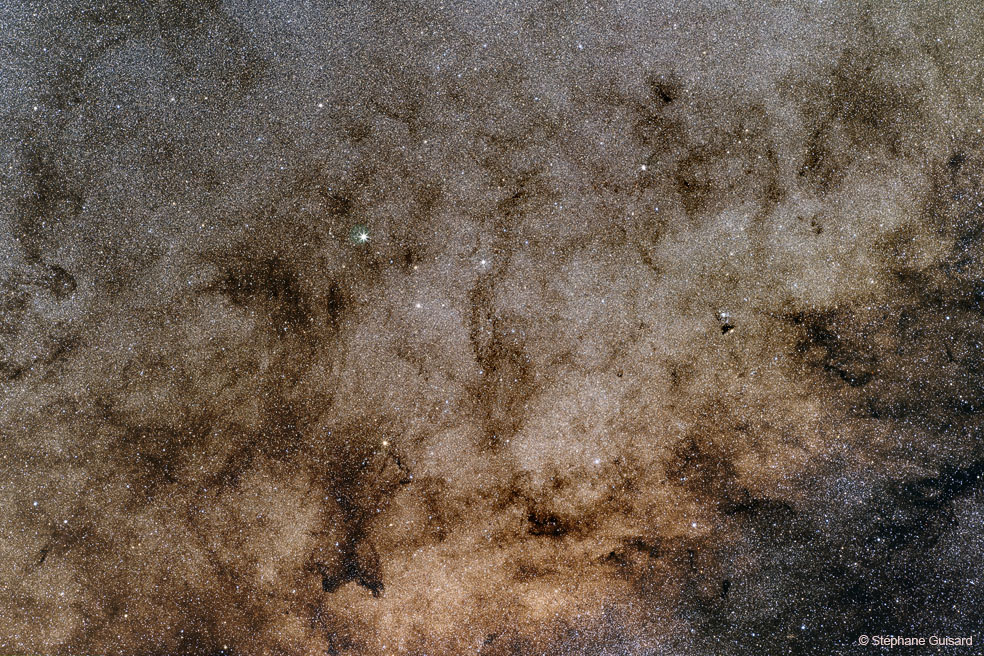
Friday, December 21, 2007
2.8: Stars and Dust through Baade's Window

Friday, December 14, 2007
2.7: A Jet from the Sun
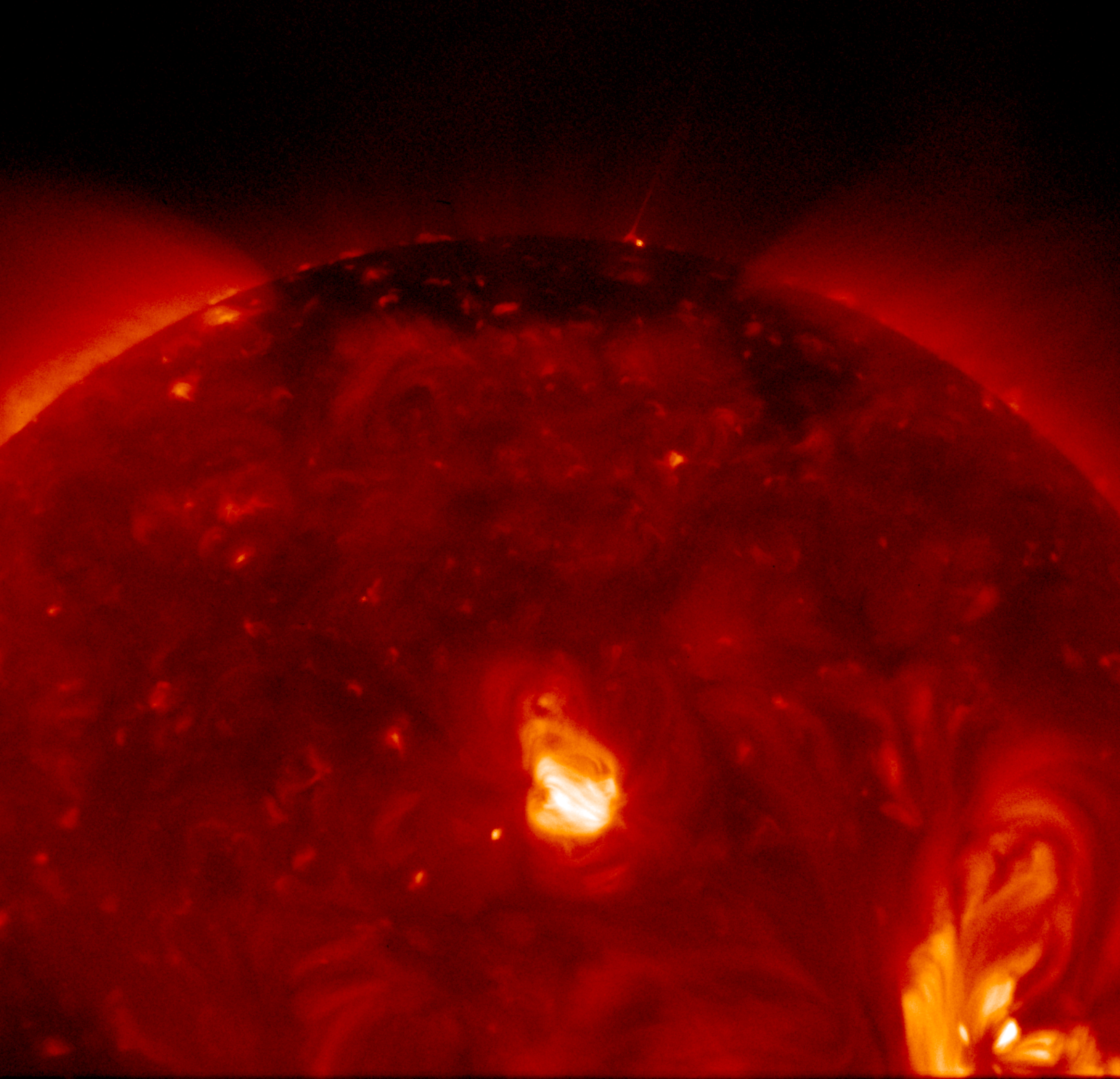 Our sun emits powerful winds that can even effect satellites orbiting Earth. Although scientist are still debating, it is thought that these winds are caused by Alfvén waves. These waves are formed the sun's magnetic fireld. New images, showing an average of 240 daily plasma jets, support this thesis. The plasma jets fuel the Alfvén waves. The jets and waves are formed when constantmagnetic field lines suddenly shift and drag protons and electons with them. Bright spots are particularly energetic regions or the sun.
Our sun emits powerful winds that can even effect satellites orbiting Earth. Although scientist are still debating, it is thought that these winds are caused by Alfvén waves. These waves are formed the sun's magnetic fireld. New images, showing an average of 240 daily plasma jets, support this thesis. The plasma jets fuel the Alfvén waves. The jets and waves are formed when constantmagnetic field lines suddenly shift and drag protons and electons with them. Bright spots are particularly energetic regions or the sun.
Saturday, December 8, 2007
2.6: Star Trails at Dawn
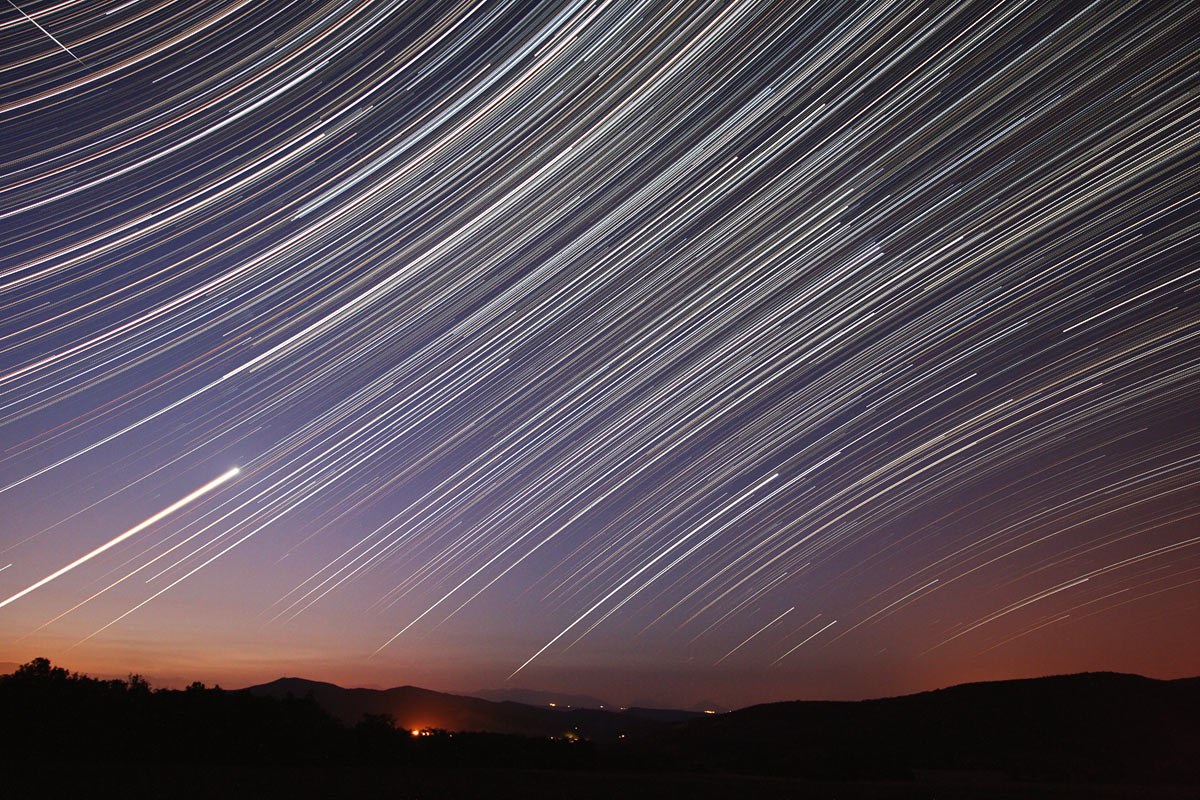
This picture was created as the Earth rotated on its axis. Over a period of time the camera to picked up the trails of the stars. The striaghtish lines show the stars close to clestial equator. Orion, Sirius, and Venus are three objects found in the picutre. This photo was taken by combining 477 consecutive 30 second digital exposures recorded over 4.3 hours.
Friday, November 30, 2007
2.5: An Iridescent Cloud Over Colorado

Friday, November 16, 2007
2.4: Cosmic Rays from Galactic Centers
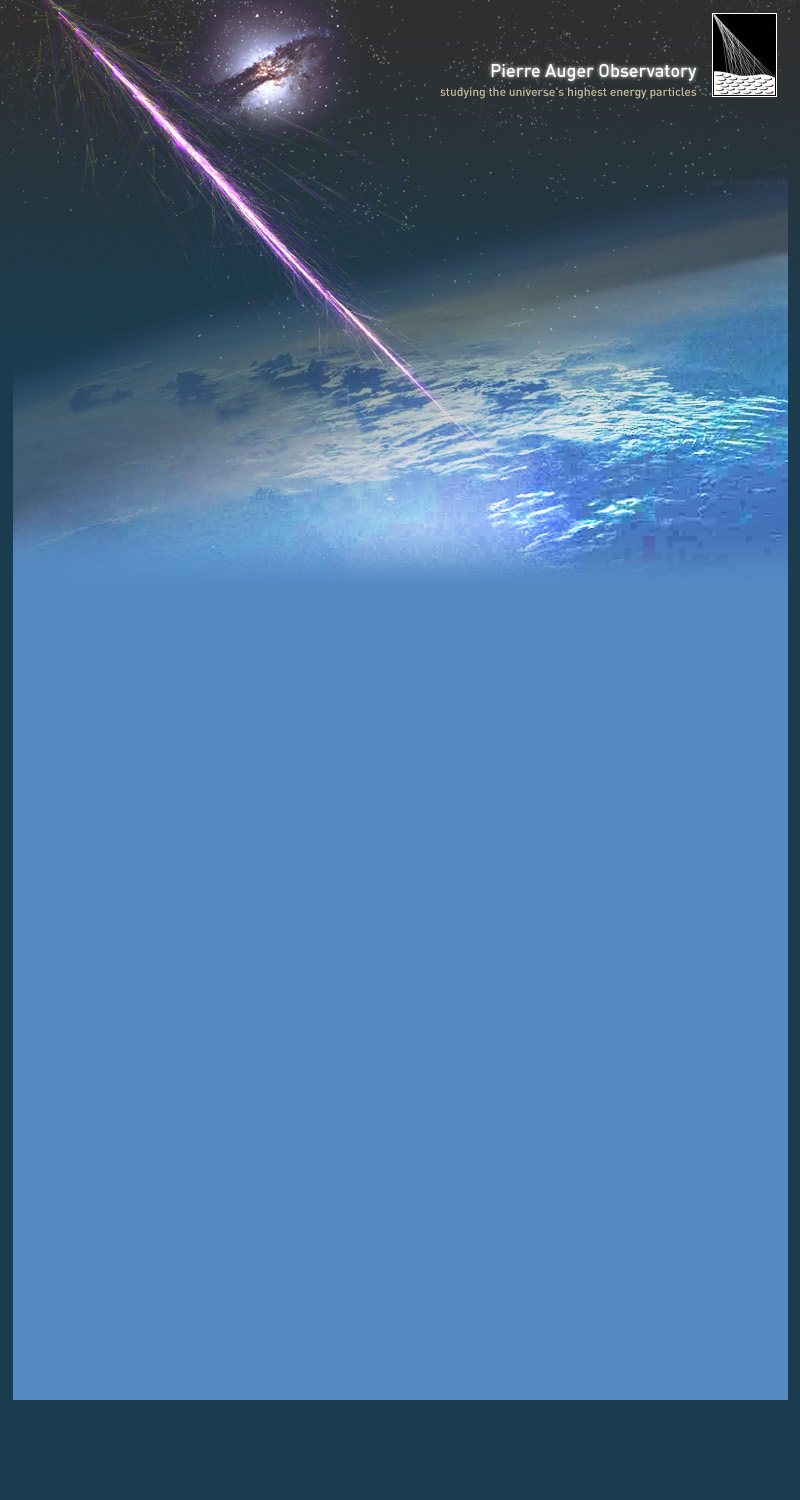
Friday, November 9, 2007
2.3: Comet Holmes Grows a Tail
Friday, November 2, 2007
2.2: Noctilucent Clouds Over Sweden
Friday, October 26, 2007
2.1: IC 5067 in the Pelican Nebula
Wednesday, October 17, 2007
Observations the first week of school
Past Observation: 9/15/07
Friday, October 12, 2007
Johannes Kepler

Johannes Kepler was born on December 27, 1571 in Weil der Stadt in
1. The path of each planet about the sun is an ellipse with the Sun at one focus.
2. Each planet moves so that an imaginary line drawn from the Sun to the planet
sweeps out equal are in equal periods of time.
3. The ratio of the squares of the periods (the time needed for one revolution
about the Sun) of any two planets revolving about the Sun is equal to the ratio of the cubes of their mean distances from the Sun.
In 1610, Kepler read about Galileo findings with the telescope. He immediately wrote a letter of support entitled Dissertatio cum Nuncio Sidereo or Conversation with the Sidereal Messenger. He eventually found a telescope to use and published his observations of Jupiter’s satellites. Kepler’s support was very helpful since people were very skeptical of Galileo’s findings. The telescope Galileo designed had a convex lense with a concave lens for the eyepiece. In 1611, Kepler published a new design of telescope with two convex lenses. It is such a good design we refer to it just as the astronomical telescope instead of the Keplerian telescope. Kepler’s mother was accused of being a witch during the witch hunts from 1615-1616. In t1620 Kepler defended her at her trial and she was finally set free. In addition to his astronomy achievements, Kepler also had a family life; he married Barbara Müller on April 27, 1597 and they had three children together: Susanna, Friedrich, and Ludwig. Kepler was an incredible man who greatly contributed to our understanding of the universe
Works Cited
Our Understanding of the Heavens.
Johannes Kepler. 10 Oct. 2007 <http://library.thinkquest.org/J002741/johannes_
Field, J. V. Johannes Kepler. April 1999. School of Mathematics and Statistics
University of St Andrews, Scotland. 10 Oct. 2007 <http://www-groups.dcs.st-and.ac.uk/~history/Biographies/Kepler.html>.
Fowler, Michael. Johannes Kepler. 1996. 10 Oct. 2007
The Galileo Project: Johannes Kepler. 1995. 10 Oct. 2007
edu/sci/kepler.html>.
1.7: NASA Picture of the Day - Aurora, Stars, Meteor, Lake, Alaska

This is a picture of an aurora flap over one of the Chena Lakes in North Pole Alaska. A piture such as this is unusual for this time of year since the lakes usually freeze over that far north. The lake will not reflect the light if it is frozen. Auroras are caused by solar winds blowing past Earth. If you look closely you can also see a meteor straeaking by below the aurora and the Pleiades star cluster.
Friday, October 5, 2007
1.6 NASA Picture of the Day: 50th Anniversary of Sputnik: Traveling Companion

Friday, September 28, 2007
1.5:NASA APOD - Saguaro Moon
 I think this picture of the full moon is just beautiful. This full moon before the autumnal equinox in commonly called the Harvest Moon. It is named the Harvest Monn because it is said that farmers would work into the night harvesting by moonlight. The ecliptic is making a very narrow angle with the horizon causing the moon to "rise" unusually fast. It is a relatively short time from sunset to the moonrising; therefore, there is not a long period of darkness.
I think this picture of the full moon is just beautiful. This full moon before the autumnal equinox in commonly called the Harvest Moon. It is named the Harvest Monn because it is said that farmers would work into the night harvesting by moonlight. The ecliptic is making a very narrow angle with the horizon causing the moon to "rise" unusually fast. It is a relatively short time from sunset to the moonrising; therefore, there is not a long period of darkness.
Friday, September 21, 2007
1.4 - NASA Picture of the Day
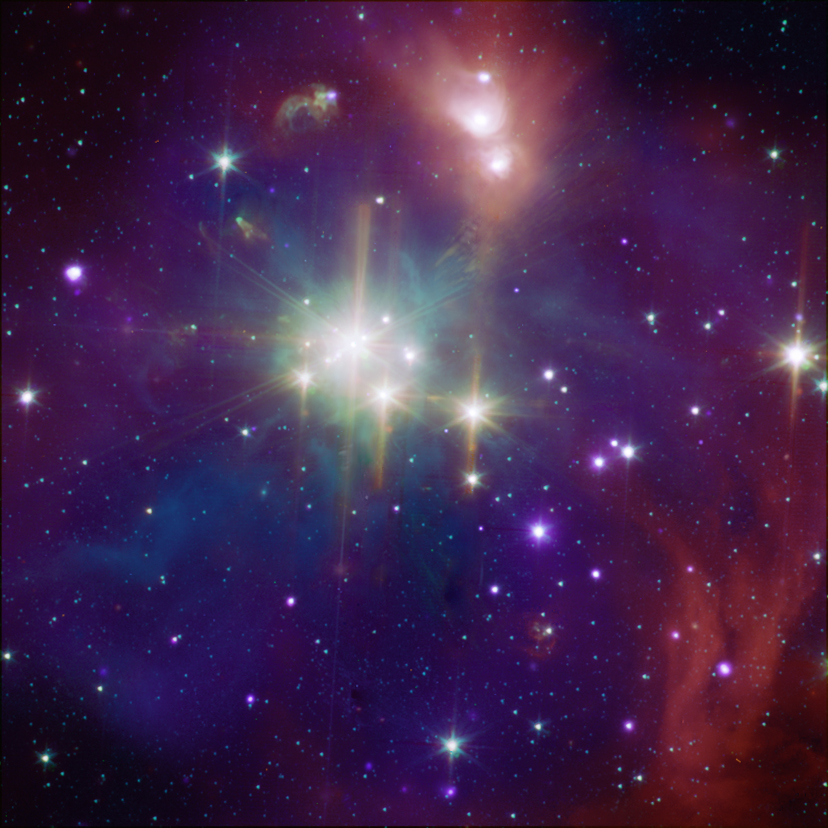 This is a picture of the Coronet Cluster in Corona Australis and is 420 light-years away. X-rays and infrared from the stars were combined to form this picture. The cluster contains a couple dozen young stars that are at different stages of development. The cluster is one of the closest and most active star forming regions. The wavelength view spans two light-years and was made by the Chandra Observatory and the Spitzer Space Telescope.
This is a picture of the Coronet Cluster in Corona Australis and is 420 light-years away. X-rays and infrared from the stars were combined to form this picture. The cluster contains a couple dozen young stars that are at different stages of development. The cluster is one of the closest and most active star forming regions. The wavelength view spans two light-years and was made by the Chandra Observatory and the Spitzer Space Telescope.
Friday, September 14, 2007
1.3 - NASA Picture of the Day September 12: Six Rainbows Across Norway

Sunday, September 9, 2007
NASA Picture of the Day September 2: South Pole Lunar Eclipse
 It is just crazy to think that the moon can be continuously up for 14 days at the South Pole. Since the moon never set, it just kept moving in a continuous line across the sky. It's a little creepy seeing the moon turn red along the eclipse sequence. Props to the photographer for getting such a good picture in -90 F weather. There is a little blurring from the atmosphere, but it is still a fabulous picture!
It is just crazy to think that the moon can be continuously up for 14 days at the South Pole. Since the moon never set, it just kept moving in a continuous line across the sky. It's a little creepy seeing the moon turn red along the eclipse sequence. Props to the photographer for getting such a good picture in -90 F weather. There is a little blurring from the atmosphere, but it is still a fabulous picture!
Monday, September 3, 2007
NASA Picture of the Day August 22: Tentacles of the Tarantula Nebula

It is just incredible that we can see this nebula that is actually in another galaxy! The Tarantula Nebula is located in the Large Magellanic Cloud, also known as 30 Doadus. It is the most violent star forming area in the Local Group. It also contains the star cluster R136 which contains some of the biggest and hottest known stars.